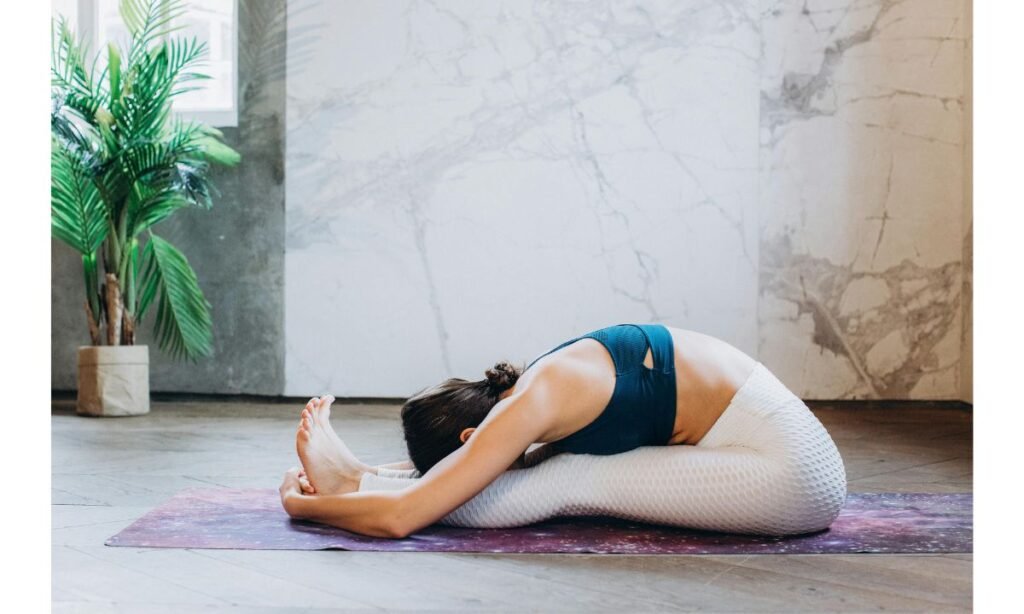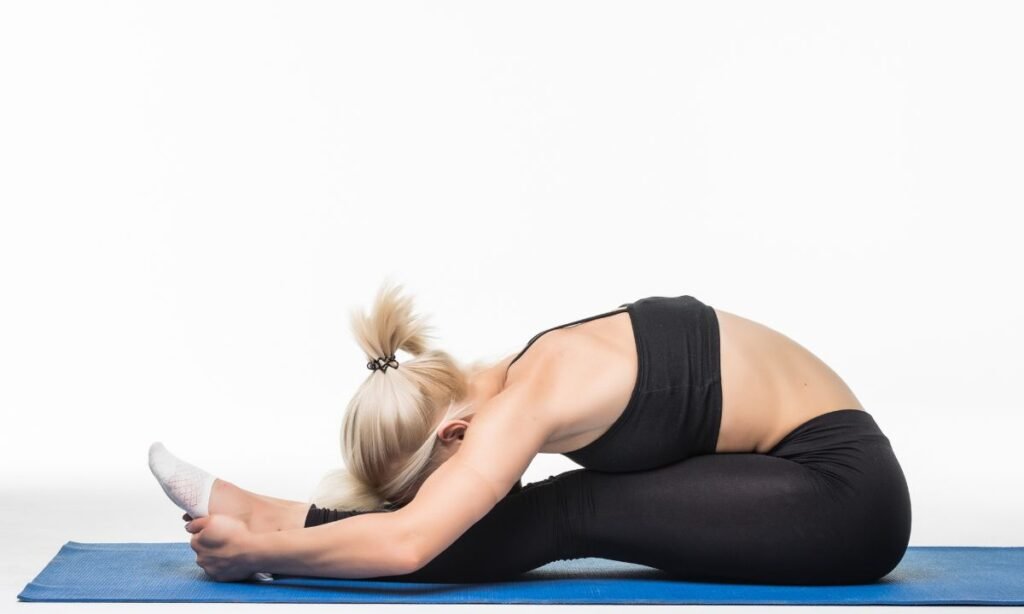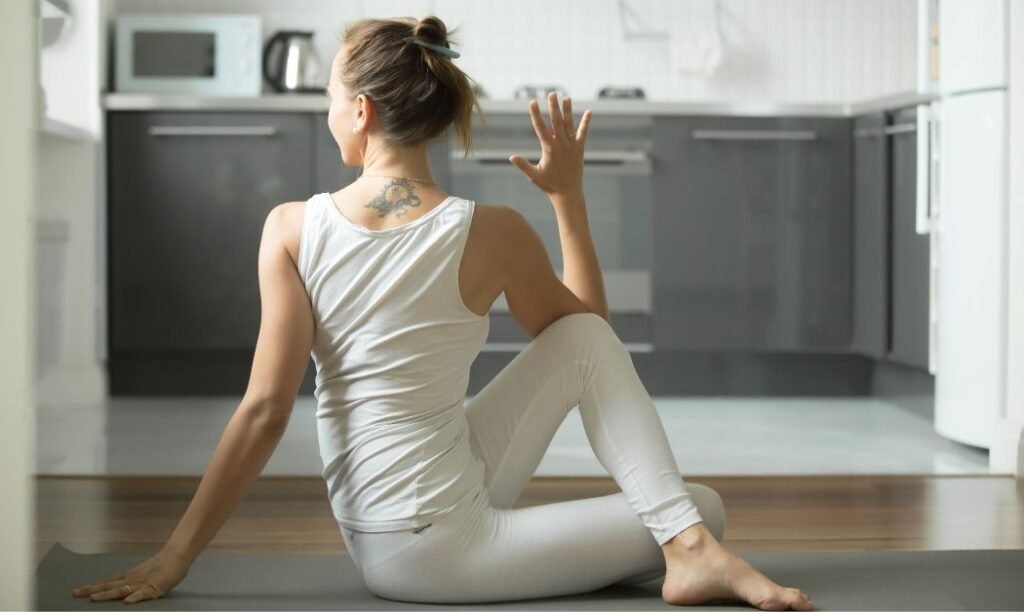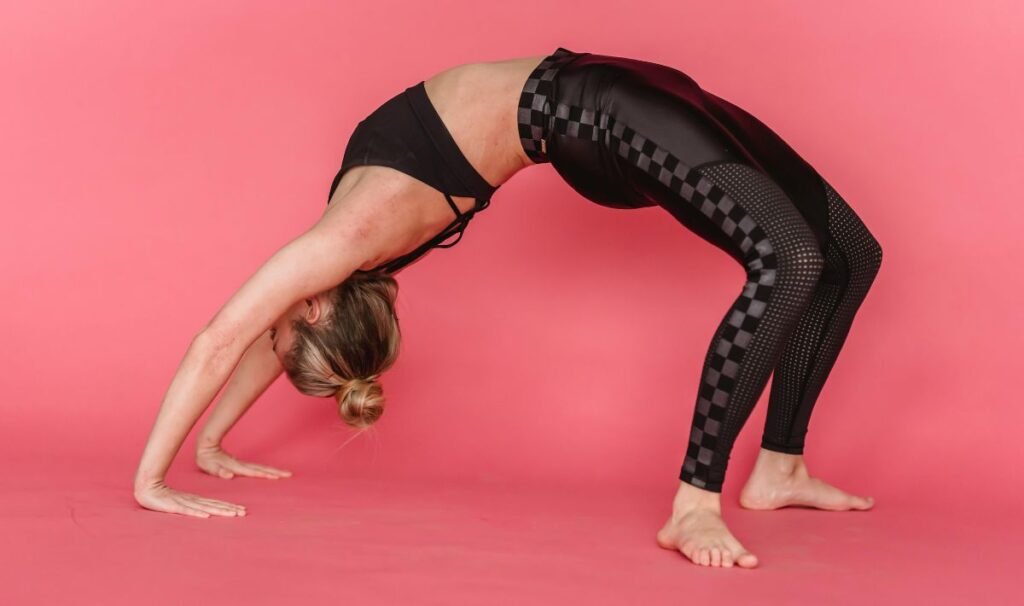Seated Forward Bend Pose, or Paschimottanasana in Sanskrit, is one of the most classic yoga poses in beginner and advanced practices. It stretches the entire back, from the spine to the legs, and is known for its calming and grounding effects. Whether you’re new to yoga or an experienced practitioner, understanding how to correctly perform this asana can unlock various physical and mental benefits. In this post, we’ll cover everything you need to know about Paschimottanasana: its benefits, key alignment cues, tips, modifications, and variations.
What is the Seated Forward Bend Pose?
Seated Forward Bend, also known as Paschimottanasana in Sanskrit, is a powerful and versatile yoga pose. It is often included in yoga routines for its numerous benefits, including stretching the spine, hamstrings, and lower back while also calming the nervous system. In Sanskrit, “Paschima” refers to the “west” or “back,” and “uttana” means “intense stretch.” So, the pose can be translated to “intense stretch of the west (back).”
While Paschimottanasana might appear simple, when done correctly, it can be a deep and fulfilling pose. In this guide, we’ll walk you through the process of mastering Seated Forward Bend, exploring its alignment, tips for improvement, and ways to modify and vary the pose based on your needs and flexibility level.
The Benefits of Seated Forward Bend
Like many yoga poses, Paschimottanasana offers both physical and mental benefits. Let’s break them down:
Physical Benefits:
- Spinal Flexibility and Posture: One of the primary benefits of Seated Forward Bend is the stretch it provides to the entire back. The forward fold helps increase spinal flexibility, which can improve posture and alleviate lower back tension.
- Stretches Hamstrings and Calves: This pose is particularly effective for opening the hamstrings and calves, which can become tight from prolonged sitting or standing. This can relieve discomfort in the legs and improve overall flexibility.
- Calms the Nervous System: Paschimottanasana is known to have a calming effect on the mind. The pose encourages relaxation, reducing stress and anxiety.
- Stimulates the Digestive System: By folding forward, you massage the abdominal organs, stimulating digestion and helping to alleviate bloating or discomfort.
- Improves Circulation: By lengthening the spine and stretching the legs, the pose promotes blood circulation throughout the body, particularly in the lower half.
Mental Benefits:
- Relieves Stress: Because Paschimottanasana is a forward fold, it helps release tension in the body, which in turn calms the mind. This makes it an excellent pose to incorporate into a stress-relieving yoga practice.
- Promotes Relaxation and Mindfulness: As you fold forward, your head lowers toward your legs, signaling your body to slow down. The practice encourages mindfulness and self-awareness, allowing for deep relaxation and emotional release.
How to Do Seated Forward Bend Pose (Step-by-Step)

Now that you understand the benefits, it’s time to break down how to do Seated Forward Bend. Follow these steps for proper alignment:
- Start in a Seated Position: Sit on the floor with your legs extended straight in front of you. Keep your spine long and straight. You can sit on a yoga block or cushion if this is more comfortable for your hips.
- Activate Your Legs: Flex your feet, pointing your toes toward the ceiling. Make sure your legs are straight, but not rigid. Engage your quadriceps (thigh muscles) to help protect your knees.
- Lengthen the Spine: Inhale deeply and extend your spine, reaching the crown of your head towards the sky. Imagine your spine becoming long, as if someone is gently pulling you upward.
- Begin the Fold: As you exhale, start to hinge at your hips, not your lower back. This means folding forward from the pelvis, keeping the spine straight as you move into the fold.
- Reach Toward Your Feet: With each exhalation, deepen the fold by reaching your chest towards your thighs, not just your head toward your knees. If possible, reach your hands to your feet or your ankles. If you can’t reach, don’t force it—just reach in the direction of your feet.
- Relax Your Neck and Head: Once you have folded as much as you can comfortably, allow your head and neck to relax. Let the weight of your head draw your spine even deeper into the fold, but avoid straining or forcing the stretch.
- Hold and Breathe: Hold the pose for 5-10 breaths (or longer, if you’re comfortable). Focus on each inhale creating length in your spine and each exhale deepening the fold.
- Exit the Pose: To come out of the pose, slowly lift your torso back up with an inhale, stacking your spine one vertebra at a time. Sit up tall, shoulders back, and chest open.
Key Alignment Cues for Paschimottanasana
Alignment is crucial in Paschimottanasana to avoid strain and maximize the benefits of the pose. Here are some key alignment cues to keep in mind:
- Hinge from the Hips, Not the Back: The most common mistake in Seated Forward Bend is rounding the lower back too much as you fold forward. Instead, focus on hinging at the hips while keeping your spine long and straight. Think of your chest leading the fold, not your head.
- Activate Your Legs: Keep your legs active throughout the pose. Engage your thighs (quadriceps) to protect your knees and make the stretch more effective. You want to feel a stretch along your hamstrings, not discomfort in your lower back.
- Lengthen Your Spine: Before you fold forward, ensure that your spine is as long as possible. Imagine someone is pulling you from the crown of your head, keeping your back straight and tall. This helps you get the most out of the forward bend.
- Relax the Neck and Shoulders: Once you’re in the fold, let your neck and shoulders relax. Avoid tension in these areas, as this can prevent you from fully releasing into the pose.
- Maintain a Slight Engagement of the Core: Keeping a subtle engagement of the abdominal muscles helps protect the lower back and maintain stability during the pose.
Tips for Mastering the Pose
- Use Props: If you find it difficult to reach your feet or fold deeply, use props like blocks or straps to extend your reach. A yoga belt around the soles of your feet can help deepen the stretch without straining your back.
- Focus on Breathing: Deep, steady breaths can help you deepen the stretch and stay relaxed in the pose. Each inhale lengthens the spine, while each exhale encourages you to fold a little deeper.
- Don’t Force the Fold: The goal of Paschimottanasana is not to reach your feet or touch your forehead to your legs; it’s about creating space and stretching your body in a comfortable, sustainable way.
- Warm Up: Make sure your body is properly warmed up before attempting this pose. Incorporating gentle back bends or hamstring stretches can prepare your muscles for the deep forward fold.
Common Mistakes to Avoid
- Rounding the Lower Back: As mentioned, rounding the back can cause strain. Focus on hinging from the hips rather than folding from the lower back.
- Forcing the Stretch: If you can’t reach your feet, don’t force it. Use a strap or simply work toward deepening your fold gradually over time.
- Locking the Knees: Keep a slight bend in your knees if your hamstrings are tight. Avoid locking the knees, as this can put unnecessary pressure on your joints.
Modifications for Seated Forward Bend
If you’re struggling with Seated Forward Bend, here are some modifications to make the pose more accessible:
- Bend Your Knees: If your hamstrings are tight, bend your knees slightly to reduce strain on your lower back. You can also sit on a cushion or blanket to elevate your hips and make it easier to hinge forward.
- Use a Yoga Strap: Loop a strap around the soles of your feet and hold the ends. This allows you to maintain a straight spine while gently deepening the fold.
- Support Your Head: If your head doesn’t reach your legs or feet, place a bolster or cushion under your head for extra support and comfort.
Variations of Seated Forward Bend Pose
To spice up your practice, try these variations of Paschimottanasana:
- Wide-Legged Forward Bend (Prone Paschimottanasana): Open your legs wider than hip-width apart and fold forward. This variation targets the inner thighs while still stretching the back.
- One-Legged Forward Bend: Extend one leg straight in front of you and bend the other leg with the foot placed against the inner thigh of the extended leg. Fold over the extended leg to deepen the stretch on one side.
- Bound Seated Forward Bend (Paschimottanasana with Bind): Reach your hands behind your back and clasp your hands together. Fold forward while maintaining the bind, intensifying the stretch.
Conclusion
Seated Forward Bend Pose (Paschimottanasana) is a deeply beneficial yoga posture that offers a range of physical and mental benefits, from improving flexibility to reducing stress. By focusing on proper alignment, using modifications when needed, and practicing consistently, you can unlock the full potential of this calming and grounding pose. Whether you’re new to yoga or an experienced practitioner, Paschimottanasana is an excellent addition to any practice.
Happy folding!
FAQs
1 . What should I do if I can’t touch my feet in Seated Forward Bend Pose?
If you can’t reach your feet in Paschimottanasana, don’t worry! It’s important not to force the stretch. Here are a few modifications:
- Bend your knees slightly to reduce strain on your hamstrings and lower back.
- Use a yoga strap around your feet to help you reach without straining. Hold the ends of the strap to help deepen the stretch.
- Sit on a cushion or yoga block to elevate your hips, which can make the fold more accessible by allowing you to hinge from the hips more easily.
Remember, flexibility comes with practice, and it’s important to honor your body’s current range of motion.
2. How long should I hold the Seated Forward Bend Pose?
In Paschimottanasana, it’s typically recommended to hold the pose for 5-10 deep breaths. However, the duration can vary depending on your practice and comfort level. If you’re looking for a deeper stretch and relaxation, feel free to hold for longer, but ensure you’re not forcing the stretch. Always listen to your body, and exit the pose if you feel discomfort or pain.
3. Can a Seated Forward Bend Pose help with back pain?
Yes, Seated Forward Bend can be very helpful for relieving back pain, especially if the pain is due to tight hamstrings or poor posture. By stretching the spine and hamstrings, it can release tension and promote better alignment. However, if you have significant back issues, such as herniated discs or sciatica, it’s important to consult with a healthcare provider before attempting this pose, as improper alignment or forcing the stretch may worsen the pain.

Sonu is a passionate yoga teacher with over 6+ years of experience helping individuals find balance, strength, and inner peace through the transformative power of yoga. As the creator of Pure Yoga Vibes, Sonu shares expert insights, inspiring practices, and a wealth of knowledge to support your wellness journey. Dedicated to creating a space for growth and mindfulness, Sonu’s mission is to make yoga accessible and enjoyable for everyone. For inquiries or collaborations, feel free to reach out at contact@pureyogavibes.com.




Pingback: 5 Inspiring Yoga Routines for Nature Lovers